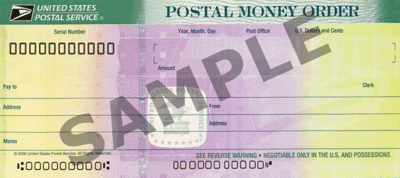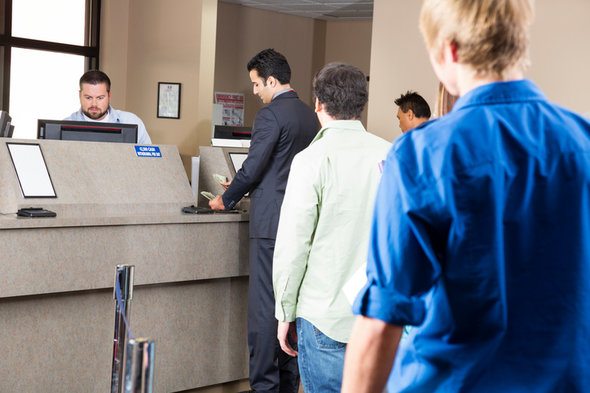Money orders provide a secure way of sending and receiving funds between banks. They can serve as an alternative to personal checks and may be especially helpful for a seller who does not have a pre-existing relationship with a buyer. Anyone can request or choose to pay a retailer, private individual or other seller through a money order. To access the promised funds, you can cash or deposit a money order by following the steps below.
Do you have questions about saving and building a financial plan? Speak with a financial advisor today.
What Is a Money Order?

A money order is a form of payment that provides ease and security. It’s often used as an alternative to mailing cash or using a personal check.
A money order offers security for both the sender and the recipient. For the sender, it’s less risky than sending cash. A money order also protects a buyer’s privacy because it contains less personal information than a personal check.
The sender pays for a money order upfront, and the money order guarantees that the recipient will receive the funds when they deposit or cash in the money order. Other examples of guaranteed checks include cashier’s checks.
It’s typically best to pay for a money order with cash or a debit card. While you can buy a money order with a credit card, you’d likely face a large fee for doing so.
Where Can I Cash a Money Order?
It’s usually best to cash a money order at the place where it was purchased, or at least at a location within the same company. For example, if the sender bought the money order at Walmart, you may want to go to another Walmart to cash it. The same idea applies to post offices, banks, credit unions, check-cashing stores and money transfer services like MoneyGram or Western Union. The money order will usually have a logo or name printed on it showing where it came from.
You should also note that cashing a money order may come with a fee. but, if you go to the original issuer, the fee is often lower—or there may be no fee at all. If you have a bank or credit union account, they may waive the fee entirely. USPS money orders are a common example—any post office will cash them for free. Additionally, using your own financial institution could be a smart way to avoid added charges.
You can cash money orders at several types of places. These include:
- Post offices handle USPS money orders.
- Banks and credit unions both sell and cash money orders, and they usually don’t charge their own customers.
- Some check-cashing stores will also cash money orders, even if you’re not buying anything.
- Money transfer services like MoneyGram and Western Union offer both purchase and cashing options.
Sometimes banks will only give you part of the money if they don’t issue the order themselves. If you need the full amount right away, it’s best to go to the company listed on the money order. To avoid problems, call ahead and check that the location can cash the full amount.
How Do I Cash a Money Order?
To cash a money order, you’ll need to first endorse it by signing your name on the back. You’ll also need to provide identification no matter where you’re cashing your money order. If you don’t have any ID, you can endorse the money order to someone else, like a sibling or friend, who does have an ID. Then they can cash it for you.
Don’t forget that you’ll probably face some service fees to cash the money order. Depending on where you go, places may charge a percentage of the order amount up to several dollars. Banks and credit unions almost always provide the service for free, especially for their customers.
Additionally, before you cash a money order, remember that scammers are always out there, looking to swindle you. Check for red flags like typos and incorrect bank information. Never accept a money order for more than you asked for, either. Scammers can sometimes ask you to cash the order and send them the excess.
How Do I Deposit a Money Order?

If you prefer to put your funds directly into your checking account, you can deposit a money order instead of cashing it. Banks usually accept post office money orders like they would a regular check at branches, ATMs or even on a mobile app. Money orders from other sources may need to be deposited at a branch.
Just make sure you have an actual checking account with the bank. Most banks won’t allow you to deposit money orders into a checkless checking account, however. You may also run into issues depositing or obtaining a money order through a mobile only bank.
Similarly to cashing a money order or check, you’ll need to endorse and sign the money order. Funds should be available within a few days from deposit. Once processed, you can spend or withdraw the money as you please. Or you could stash it away into a savings account, to save for a rainy day.
Here are six general steps to help to deposit or cash a money order:
- Take the money order to your bank or a location that accepts it (such as a post office or check-cashing store).
- Bring valid photo ID (driver’s license, passport, etc.).
- Provide your account number if you’re depositing into your account.
- Endorse the money order by signing the back—do this in front of the teller or cashier.
- Choose to either receive cash or deposit the amount into your account.
- Get a receipt to confirm the transaction.
If you don’t have ID, you may be able to endorse the money order to someone you trust who does. Be careful when accepting money orders from others—look out for red flags like typos, odd amounts, or requests to return extra funds. These could be signs of a scam.
Frequently Asked Questions
Is There a Fee to Cash a Money Order?
You’ll probably face some service fees to cash a money order. Depending on where you go, places may charge a percentage of the order amount up to several dollars. Banks and credit unions almost always provide the service for free, especially for their customers.
What Do I Need to Cash a Money Order?
You’ll need the money order and government-issued identification, such as a driver’s license. You may need your account number or ATM card to cash a money order at your bank.
Where Can You Cash a Money Order If You Don’t Have a Bank?
Check-cashing stores, international money transfer desks and post offices are all likely places to cash a money order.
Bottom Line
Cashing or depositing a money order is similar to buying one. There are a number of convenient places to do so, although it also tends to include a small fee. You can usually avoid that fee by going to your own bank, though. Your best bet is often cashing the money order at the same place it came from.
Tips for Money Management
- A financial advisor can help you manage your money to reach both short- and long-term goals. Finding a financial advisor doesn’t have to be hard. SmartAsset’s free tool matches you with vetted financial advisors who serve your area, and you can have a free introductory call with your advisor matches to decide which one you feel is right for you. If you’re ready to find an advisor who can help you achieve your financial goals, get started now.
- A simple way to earn interest on your money in the bank is to ensure you’re taking advantage of the top savings rates available. Check out SmartAsset’s savings account comparison tool to learn more.
Photo credit: ©iStock.com/Willowpix, ©iStock.com/Alina555, ©iStock.com/RyanJLane
